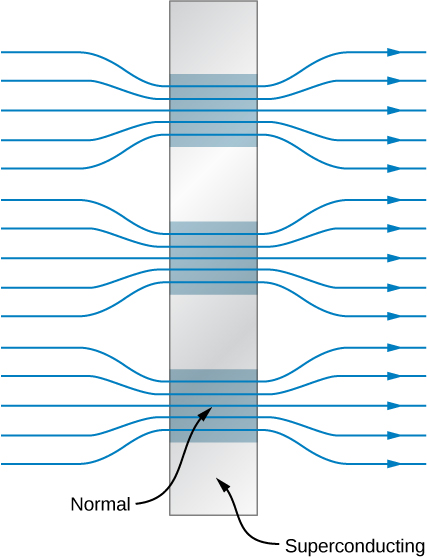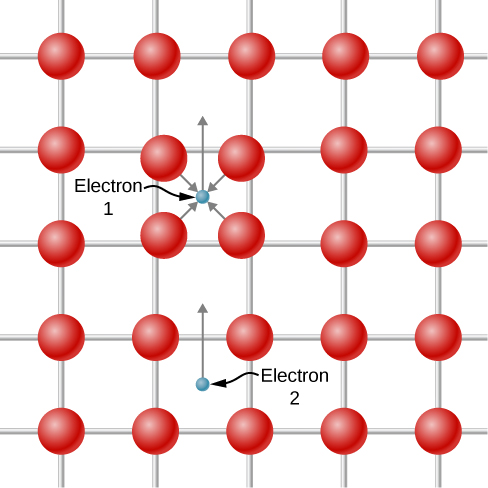| << Chapter < Page | Chapter >> Page > |

In an earlier chapter, we learned the magnetic field inside a current-carrying wire of radius a is given by
where r is the distance from the central axis of the wire. Thus, the field at the surface of the wire is For the niobium wire, this field is
Since this exceeds the critical 0.16 T, the wire does not remain superconducting.
Check Your Understanding What conditions are necessary for superconductivity?
a low temperature and low magnetic field
A successful theory of superconductivity was developed in the 1950s by John Bardeen , Leon Cooper , and J. Robert Schrieffer , for which they received the Nobel Prize in 1972. This theory is known as the BCS theory . BCS theory is complex, so we summarize it qualitatively below.
In a normal conductor, the electrical properties of the material are due to the most energetic electrons near the Fermi energy. In 1956, Cooper showed that if there is any attractive interaction between two electrons at the Fermi level, then the electrons can form a bound state in which their total energy is less than . Two such electrons are known as a Cooper pair .
It is hard to imagine two electrons attracting each other, since they have like charge and should repel. However, the proposed interaction occurs only in the context of an atomic lattice. A depiction of the attraction is shown in [link] . Electron 1 slightly displaces the positively charged atomic nuclei toward itself as it travels past because of the Coulomb attraction. Electron 2 “sees” a region with a higher density of positive charge relative to the surroundings and is therefore attracted into this region and, therefore indirectly, to electron 1. Because of the exclusion principle, the two electrons of a Cooper pair must have opposite spin.


Notification Switch
Would you like to follow the 'University physics volume 3' conversation and receive update notifications?